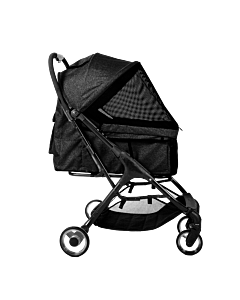C&D - Walking with a senior dog

Enjoying walks – even when your dog is a bit older
Older dogs may move a little slower, but they still love getting some fresh air, stopping to sniff, and enjoying their familiar walks with you. Walking a senior dog just takes a bit of extra care and a few thoughtful adjustments.
Walking with a senior dog? Here's how to keep it safe, comfy and fun!
Want to know how to take your older dog out safely and comfortably? Here’s what to keep in mind for a gentle, happy walk together.
1. Mind the pace and distance
Senior dogs often deal with joint pain, stiff muscles or lower stamina. Keep the pace slow and choose shorter, flat routes. Let your dog set the pace – long sniffing breaks are absolutely fine!
✔ Tip: It’s better to go on several short walks a day than one long one. Two or three shorter outings can work wonders for their mobility and mood.
2. Weather and terrain
Older dogs can be more sensitive to cold, wind or heat.
- In winter: consider a warm dog coat.
- In summer: walk during cooler parts of the day (early morning or evening).
- Avoid slippery, uneven or sandy paths that might strain their joints.
3. Before & after walk care
-
- Let your dog move freely on a long lead or soft surface before and after the walk.
- A gentle paw rub or short massage can feel great post-walk.
- If your dog has arthritis or pain, ask your vet about supplements or pain relief options.
4. Water and rest are key
Always bring fresh water, especially in warm weather. Plan walks in areas where you can stop to rest – benches, grassy patches or shady spots are ideal.
5. Helpful tools for senior dogs
There are plenty of useful aids designed for older dogs:
- ✅ Dog harness with handle for extra support on tricky paths
- ✅ Pet steps or ramps for getting in and out of the car
- ✅ Orthopaedic booties if your dog drags their paws
- ✅ Dog stroller or cart for longer trips if walking the full route is too much










